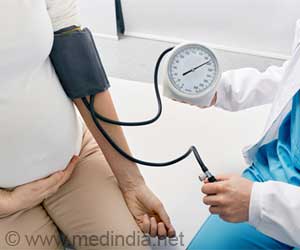Two common iron compounds were found to increase the formation of amphiregulin. Ferric citrate and ferric EDTA are the two iron compounds, which are often used in dietary supplements and also as a food additive.

- Two common iron compounds were linked to the formation of colon cancer
- Ferric citrate and ferric EDTA are the two iron compounds
- Amphiregulin, a known biomarker for cancer increases with these two iron compounds
Ferric citrate and ferric EDTA are the two iron compounds that are often used in dietary supplements and also as a food additive in the worldwide markets like the USA and the EU.
The new study was conducted in collaboration with the UK Medical Research Council and Cambridge University.
The research team examined the effect of normal supplemental doses of ferric citrate and ferric EDTA compounds on two types of cultured human colon cancer cells.
Another compound called ferrous sulphate was also studied by the team, as it is a commonly available iron compound.
Link Between Iron Compounds and Cancer
"We can conclude that ferric citrate and ferric EDTA might be carcinogenic, as they both increase the formation of amphiregulin, a known cancer marker most often associated with long-term cancer with poor prognosis," says Nathalie Scheers, Assistant Professor at the Chalmers University of Technology, and lead writer on the study.
Today there are several types of iron supplements available in the market, which are based on at least 20 different iron compounds, and are sold under a wide range of brands.
One of the most common iron supplement used is ferric sulphate. However, currently, even ferric citrate is also widely available in both stores and online. It is said to ease the stomach and absorbed more easily by the body through foods such as granary bread, beans, and nuts.
"Many stores and suppliers don't state what kind of iron compound is present - even in pharmacies. Usually, it says 'iron' or 'iron mineral,' which is problematic for consumers," said Nathalie Scheers.
Iron deficiency is a most common nutritional deficiency and to combat this iron is added to some foods.
In both the USA and the EU, ferric EDTA has been approved as a fortifying agent. Also, iron is added to flour and powdered drinks in countries like China, Pakistan, Brazil, Mexico and The Philippines.
Additionally, iron is present in certain medicines for children in countries like the UK and France.
"First, we must bear in mind that the study was done on human cancer cells cultured in the laboratory since it would be unethical to do it in humans. But, the possible mechanisms and effects observed still call for caution. They must be further investigated," said
Nathalie Scheers said that the study was not done on humans, but on human cancer cells that were cultured in the laboratory and there is a need for further research.
Why Does Our Body Need Iron?
Hemoglobin is a protein present in red blood cells. Iron is an important component of hemoglobin that helps to transport oxygen to all parts of the body.
The total amount of iron present in the body is 3-4g. About 75 percent of the iron is linked to hemoglobin and myoglobin, and the remaining 25 percent is stored in the various tissues of the body.
Most of the iron required by the body is obtained from foods such as meat, fish, fruits, vegetables, and whole grains.
However, additional amounts of iron are required during pregnancy, loss of blood or have low levels of hemoglobin, and in patients with kidney disease, high doses of iron are required to bind phosphates into the bloodstream.
Source-Medindia














